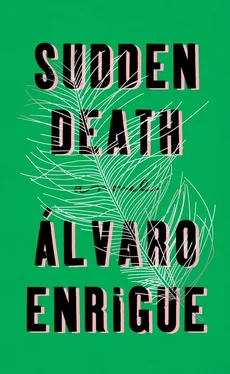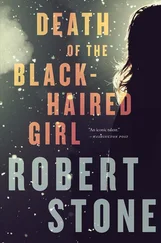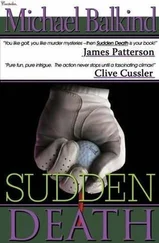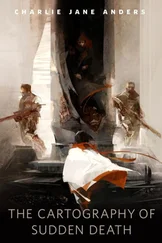Rombaud was neither beloved nor indispensable. Beautiful and immoral, he drifted coldly in the tight circle of very specialized workers who thrived in the Renaissance courts under the blind eye of ambassadors, ministers, and secretaries. His reserve, striking looks, and lack of scruples made him a natural for certain kinds of tasks known to all and spoken of by none, the dark operations that have always been unavoidable in the conduct of politics. He dressed with surprising good taste for someone with the job of killer angel: he wore expensive rings, breeches lavishly trimmed with brocade, and royal-blue velvet shirts unsuited to a bastard, which he was in every sense of the word. Cheap gemstones were braided with gypsy panache into his gold-streaked chestnut hair, the gems filched from mistresses conquered with the various weapons over which God had granted him mastery. There was no knowing whether he was silent because he was clever or because he was a fool: his deep blue eyes, which turned down a little at the corners, never expressed compassion, but they never expressed any kind of animosity either. Also, Rombaud was French: for him, killing a queen of England was less sin than duty. Cromwell had called him to London because he believed this last quality made him a particularly hygienic choice for the job.
It wasn’t King Henry who had arranged for his wife’s death by Toledo sword rather than by the lowly blow of the ax that separated her brother’s head from his neck on the accusation he had slept with the queen, a sin that earned him the record sum of three death sentences: for lèse-majesté, for adultery, and for degeneracy. No one — not even the notorious Thomas Cromwell — could bear for such a neck as hers to be hacked by the coarse blade of an ax.
On the morning of May 19, 1536, Anne Boleyn attended mass and made her confession. Before she was turned over to the constable of the Tower so her body could be cleaved apart, she asked that her ladies-in-waiting alone be given the privilege of cropping her heavy red braids and shaving her head. Most of the surviving portraits, including the sole copy of the only one reportedly painted from life — now part of Hever Castle’s Tudor portrait collection — depict her as the owner of crimped and significant locks.
It seems that the royal bedchamber had a dampening effect on King Henry’s libido, such a champion was he in extramarital affairs — and such an underperformer in his royal reproductive duties. No one knew this better than the marquess of Pembroke, who had managed to conceive by him after a single day in the country, while he was still married to his previous queen. They’d had a daughter as lovely as the marquess herself, for whom the monarch professed the thunderous affection associated with homicidal types. So Anne Boleyn approached the scaffold conscious of the statistical odds that her daughter, Elizabeth, would reach the throne, as indeed she ultimately did. Boleyn delivered herself into martyrdom with a show of calculated cheer. Among her last words, pronounced before the witnesses to her death, were: “I pray God save the King, and send him long to reign over you, for a gentler nor a more merciful prince was there never.”
What is it about nudity, in theory the great equalizer, that excites us? In their naked state, only monsters should turn us on, and yet it’s the very sameness of our nakedness that we find arousing. The ladies who accompanied Boleyn in her trials had pulled back the collar of her gown to reveal her neck before escorting her to the scaffold. They had also removed her necklaces. They didn’t feel that the removal of her veil and tresses marred her beauty in the least: she was just as lovely with a shorn head as she was with hair.
The bluish gleam of her neck quivering in anticipation of the blow triggered an emotional response in Rombaud. According to one witness, the mercenary was kind enough to make an effort to surprise the lady lying there bare from her shoulder blades to the crown of her head. With his sword raised high and ready to come down upon the queen’s neck, he asked carelessly: Has anyone seen my sword? The woman twitched her shoulders, perhaps relieved that some chance occurrence might spare her. She closed her eyes. Vertebrae, cartilage, the spongy tissue of trachea and pharynx: the sound of their parting was like the elegant pop of a cork liberated from a bottle of wine.
Jean Rombaud refused the bag of silver coins that Thomas Cromwell offered him when the job was done. Addressing the whole gathering, but looking into the eyes of the man who had schemed until he unseated the queen, he said that he had agreed to do what he had done to spare a lady the vile fate of dying under an executioner’s blade. He made a sideways bow to the ministers and clergymen who had witnessed the beheading, and he returned straight to Dover at full gallop. Earlier that morning, the lord high constable had packed the categorical braids of the queen of England in his saddlebags.
Rombaud was an avid tennis player, and this seemed sufficient payment: the hair of those executed on the scaffold had special properties that caused it to trade at stratospheric prices among ball makers in Paris. A woman’s hair was worth more, red hair more still, and a reigning queen’s would command an unimaginable price.
Anne Boleyn’s braids produced a total of four balls, which were by far the most luxurious sporting equipment of the Renaissance.
On the Nobility of the Game of Tennis

First we shall see how the game of tennis has been ordered to excellent and rational ends, which is how all worthy and valuable art should be, in imitation of nature, which does nothing without great mastery. Note, for example, how the ancient and wise inventors of this game, considering that it inflames and impassions even the palest and weakest youth, contrived it in such a fashion that the player is never hurt. As will subsequently be explained, the ball is not hit while it is in the air, but rather after it has bounced on the ground, making it impossible for the receiving player to be injured. Similarly, the receiving player waits for the bounce to learn whether the point he intends to make is valid. If he wants the advantage, he is obliged to display the requisite decency and allow the other player equal time to recover.
ANTONIO SCAINO, Treatise on the Game of the Ball , Venice, 1555

Before the start of the second game, the Spaniard approached his linesman. He’s a strong player and he knows the court, said the duke; you won the first game because he didn’t expect anything of you. I’m younger, replied the poet; I can match him for strength. But you have a lame leg. The surprise factor, and I’ll play twice as hard; should I move in? He’ll break you with those drives of his. I’ll bring him short. Then you’d be putting everything in the hands of fate; better to wear him down, it’s clear he won’t last; take it point by point: backward, forward, play the corners. The poet snorted and wiped the sweat from his forehead, looking down with his hands on his hips, as if waiting for clearer instructions. If he hadn’t been in the grips of a hangover, the prospect of such a match might’ve seemed less insurmountable. It’ll be close, he said. Concession is the other option, said the duke, but the duel was your idea. The poet stared at the ground: We could turn to swords, finish up quick. The duke shook his head: Not another scandal, and he’s a wild man with the blade. The poet grunted: I haven’t lost yet. Precisely. Very well, I’ll take it point by point. Before he returned to the court, he said: Have you noticed they don’t speak to each other? Who? He and his second. The duke didn’t see that it mattered: What of it? Last night they didn’t speak either, they don’t even seem to be friends, look at them. His opponent hadn’t gone near the gallery. The mathematician languished, gazing at the specks of dust floating in the air.
Читать дальше













